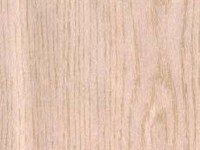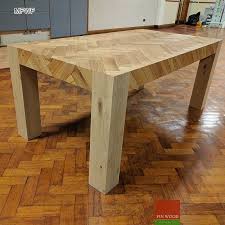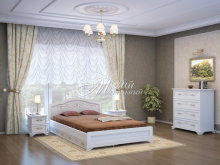Characteristics of some types of wood
 Solid wood furniture is quite expensive. It is easy for a layman to confuse a chipboard with an array. In order not to be mistaken, it is best to look at the wooden details on the cut. If this is not possible, then you need to pay attention to the drawing of the tree: it is easy to find identical patterns on pressed plates, but a natural tree never repeats its lines.
Solid wood furniture is quite expensive. It is easy for a layman to confuse a chipboard with an array. In order not to be mistaken, it is best to look at the wooden details on the cut. If this is not possible, then you need to pay attention to the drawing of the tree: it is easy to find identical patterns on pressed plates, but a natural tree never repeats its lines.
You can relate to this as you like, but many centuries have been talking about the energy of trees and wooden furniture and their impact on humans. Three main types of trees are known by the type of their impact on humans:
– Trees – “vampires” – when contact reduces a person’s energy, aspen, poplar, chestnut, willow, spruce, bird cherry.
– Trees – “donors” – improve energy, give strength to oak, acacia, birch, maple, mountain ash.
– “Neutral” – everyone else.
It is believed that furniture made of trees, “vampires” categorically can not be kept at home. On the one hand, such furniture draws negative energy, sores, etc., but with it, if it is next to such a tree for more than a certain time, it begins to take away good energy and can even lead to illnesses. The strongest tree in energy extraction is aspen.
PINE
Pine Density: soft wood, easy to scratch.
Color: light.
Where it is most often used: it is used in cabinet furniture and for the manufacture of upholstered furniture frames; pine furniture is perfect for a country house.
Features: resistance to decay, perfectly tolerate fluctuations in temperature and humidity.
It is believed that the pine tree is the only tree that attracts stars and is a tree of immortality. In China and Indochina, pine was considered a magic tree, bringing happiness and averting misfortune. Pine with its pleasant smell is one of the most affordable materials. Wood is perfectly processed with dyes and varnishes after tarring.
LINDEN
Linden Density: Durable plastic material.
White colour.
Where it is more often used: it is applied in carving and turned elements.
Features: high impermeability, and therefore poorly stained; however, it easily accepts the color of valuable species of wood through staining.
The linden is well processed with cutting tools. It is hardy on dampness, however it is subject to a wormhole. The best timber is southern linden; it is mainly used to make models, as well as all carved articles for gilding.
CHERRY
Cherry Density: not very hard rock.
Color: orange-reddish with brown lines, pinkish brown, darkens over time.
Where it is most often used: for the production of exclusive furniture, goes well in furniture with carvings, glass stained-glass windows with original ornaments and rounded shapes.
Features: lends itself well to all types of processing.
Cherry is very easy to plan, bend, varnish. The processed surface is very smooth.
Maple
MAPLE
Density: heavy, dense, hard and strong wood.
Color: light.
Where it is most often used: it is quite rare, mainly for the manufacture of expensive furniture in the form of veneer. From Canadian maple, veneer is sometimes produced with a very bizarre texture called the bird’s eye.
Cedar
Density: low.
Color: light yellow or dark brown.
Where it is most often used: rarely in home furniture, more often in furniture for a sauna.
Feature: great resistance to moisture and decay.
RED TREE
Redwood Density: high.
Color: in a freshly cut state, mahogany wood has a yellowish-red color, but gradually darkens over time, taking on a brown-red or raspberry-red color with prominent light and dark veins. Where it is most often used: expensive furniture.
Mahogany, sapeli, Evenwi, some species of the Australian Equalipt, which have a common color and a similar structure of wood, are traditionally called mahogany. The popularity of wood lies not only in its beauty, but also in the immutability of the shapes and sizes of mahogany furniture, which does not warp or crack when temperature and humidity change.
Ash
ASH Density: solid, slightly softer than oak.
Color: delicate golden hues.
Where it is most often used: facing veneer, bent and carved furniture.
With great flexibility and plasticity, ash allows you to make beautiful, well-polished furniture out of it. The rich texture of ash is best manifested when combined with strict, noble forms of furniture, giving them an attractive sophistication.
Poplar
Density: soft wood.
Color: Golden.
Where it is most often used: despite the prevalence in the widespread nature, furniture makers rarely use poplar as a material in their production; mainly used for the manufacture of expensive furniture.
Features: low resistance to decay.
PEAR PEAR
Density: solid wood, warps and cracks little.
Color: golden pinkish.
Where it is more often used: facing veneer.
Features: dries sharply.
Pear is a favorite material for carvers. Polished wood has a glossy matte finish.




